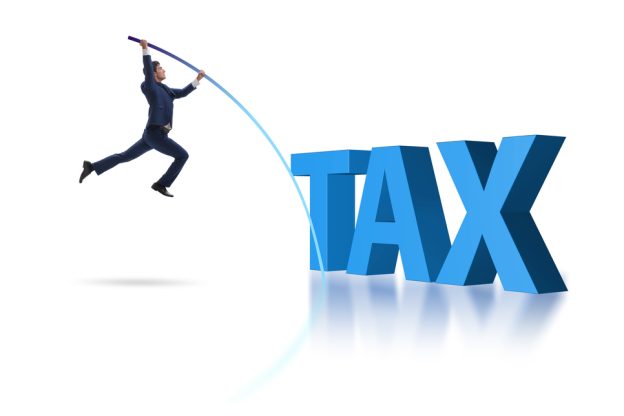
The way in which some employed individuals can claim a tax rebate for work-related expenses has been changed by HMRC.
A P87 form is used by taxpayers who are employed under PAYE and who don’t need to complete a self assessment tax return.
In addition to the P87 a large percentage of tax refund claims for employment expenses will now need to be backed up by evidence.
HMRC is taking this “check first, pay later” approach in order to reduce the number of ineligible and potentially fraudulent claims for employment expenses. They suspended processing some claims in June 2024 while they considered the best way to manage this risk.
Starting from October 14, 2024, HMRC has introduced the new requirements for taxpayers who wish to claim most types of PAYE employment expenses.
HMRC has stated: “Our aim is to help people get their tax right first time, instead of focusing on correcting issues after they arise. We want to fix problems at source by taking preventative action to educate and prompt customers towards better compliance. This approach is built on stopping the ineligible payments going out in the first place through increased checks and changes to processes”.
Before these recent changes taxpayers in many cases could submit their initial P87 form without supporting evidence to prove their eligibility.
HMRC is still allowing you to backdate a tax rebate claim via a P87 form for the last four tax years and should only use the P87 if your claim is worth less than £2,500.
Any claims worth over the £2,500 threshold are expected to be submitted on a tax return through self assessment.
What type of evidence should I include with my P87 tax rebate claim?
The types of evidence HMRC will require will vary on the type of tax claim being made for example:
- Copies of receipts for expenses like professional subscriptions, hotel stays, and meal costs.
- A mileage log detailing the reason and start/end points for any business travel.
- Proof that the taxpayer is required to work from home, such as their employment contract.
- Documentation for other expenses like tool and equipment purchases or protective clothing.
Uniform washing flat rate expense
For agreed fixed amounts (known as ‘flat rate expenses’) for uniform maintenance, you don’t need to send evidence with your P87.
If you’re claiming for the exact amount spent on a work uniform, or work clothing you should send copies of receipts or other proof of purchase.
Tool allowance flat rate expense
For agreed tool allowance flat rate expenses no evidence will be necessary but if you are claiming for the actual cost of tools and equipment bought for work use receipts should be sent along with your P87 expenses form.
Professional fees and subscriptions
HMRC expects you to send copies of receipts or other proof showing how much you paid for each professional fee or subscription you’re claiming.
Mileage tax relief
Work related journies to temporary workplaces (not including normal commuting) can qualify for mileage tax relief and you should send copies of your mileage logs, including:
- the reason for each journey.
- the postcode for the start of each journey.
- the postcode for the end of each journey.
For claims involving more than one job, send a mileage log for each employment.
If your employer paid you a taxable mileage allowance or reimbursed your mileage costs at a rate below the AMAP rates HMRC will normally need some proof of what your employer paid you.
For travel costs like public transport tickets or parking fees for work trips, you’ll need to send receipts as evidence.
Hotel and meal expenses
For accomodation and meal costs (also known as subsistence expenses) when working at temporary workplaces you should send copies of receipts that show:
- the date of your stay or meal.
- the name of the hotel or restaurant.
Working from home tax relief
You must provide proof that you need to work from home, such as your employment contract. If your contract doesn’t mention this HMRC will need you to send other evidence showing it’s a job requirement.
PPI tax rebate
HMRC also now needs evidence if you are using an R40 to claim a PPI tax rebate the evidence needed may include:
- The conclusive response letter from the financial institution that reimbursed you for the PPI payment.
Or
- A certificate issued by the financial institution that repaid you, verifying the precise amount of tax withheld from the PPI refund.
How to submit your P87 form to HMRC
Taxpayers will now need to submit the completed P87 form along with the supporting evidence to HMRC by post to the address shown on the form.
The online P87 digital claim process is being reinstated by HMRC, but this is not expected to be available until April 2025, except for tax rebate claims related to uniform, work clothing and tools which should be possible from October 31, 2024.
HMRC has confirmed “we do recognise that an online claim route is more convenient for customers, which is why we are working at pace to reinstate the digital process as soon as possible.
For ‘uniform, work clothing and tool’ expenses, customers will be able to claim these online from 31 October 2024. For all other expenses, we expect a digital claim route to be available by April 2025”.
To fill in a P87 you need to:
- Download and save the P87 form to your computer.
- Open it using the latest free version of Adobe Reader.
- Fill in the form on-screen and print it, or print it and fill it in by hand using a pen.
- Send the completed P87 form and any evidence to HMRC as per the address on the form.
Reference HMRC: https://www.gov.uk/government/publications/hmrc-issue-briefing-evidence-required-to-claim-paye-p87-employment-expenses/evidence-required-to-claim-paye-p87-employment-expenses







